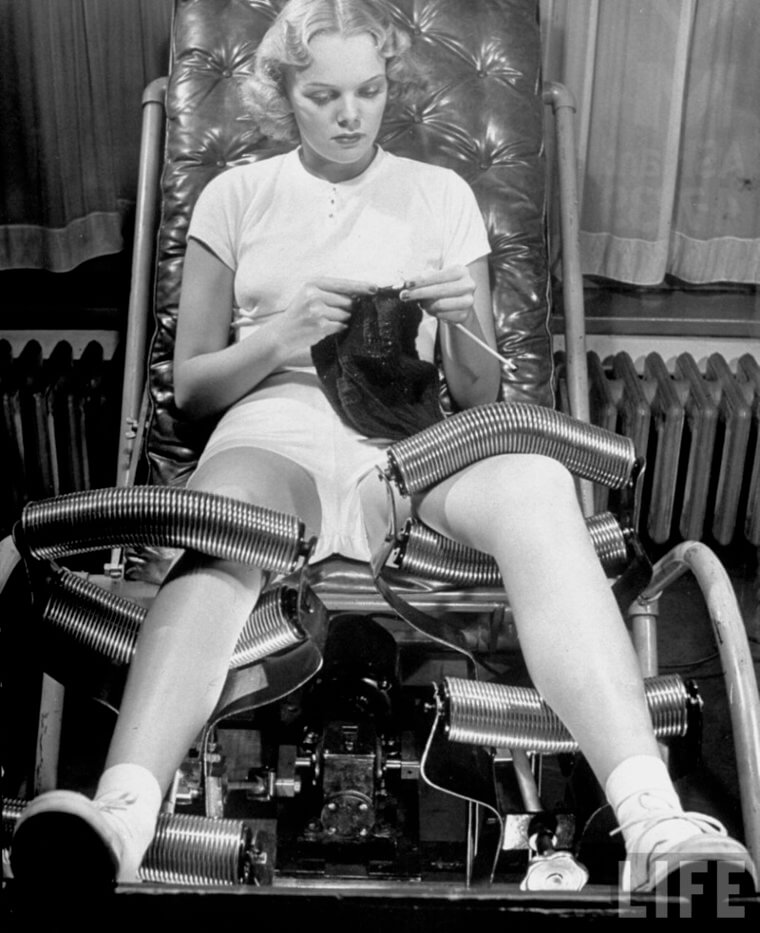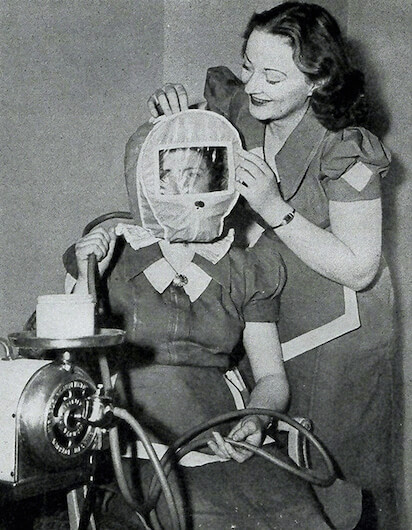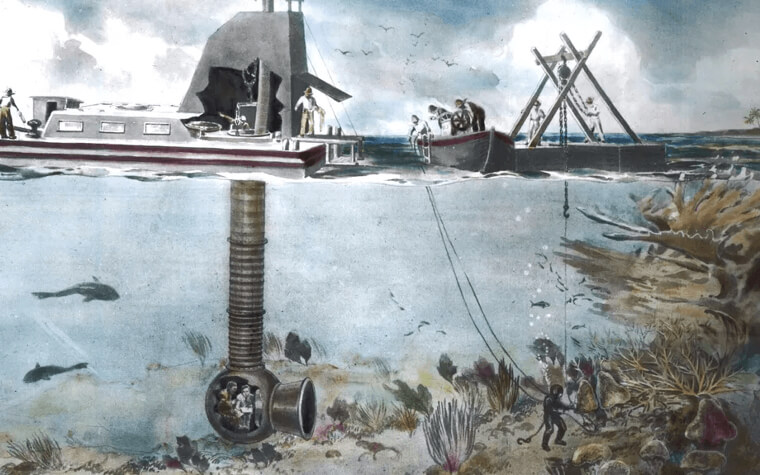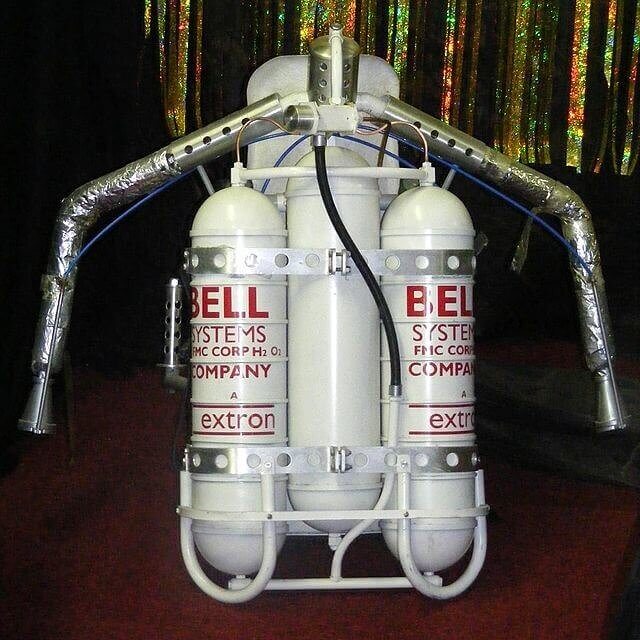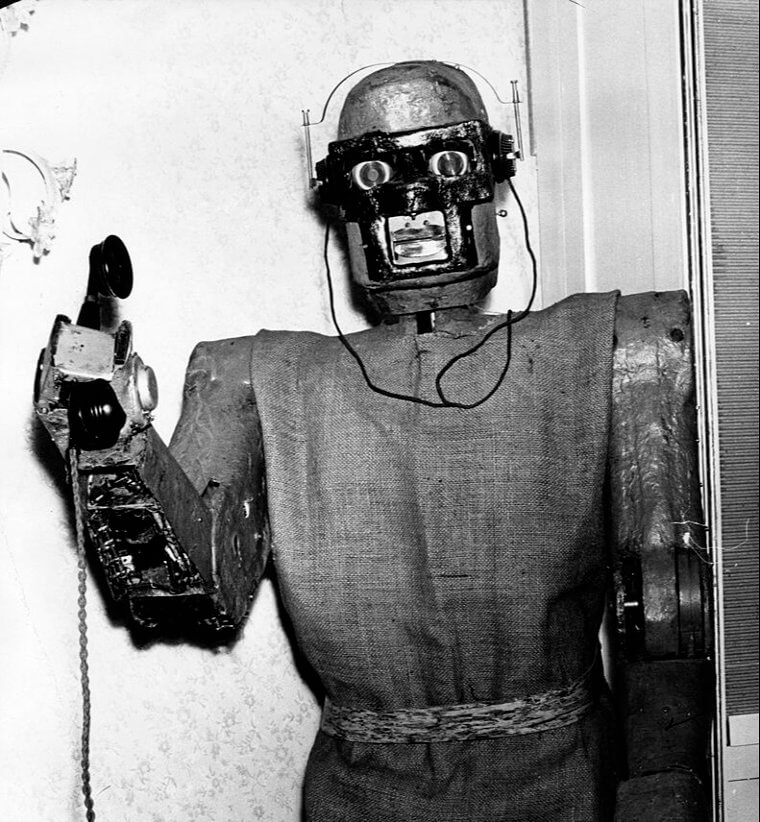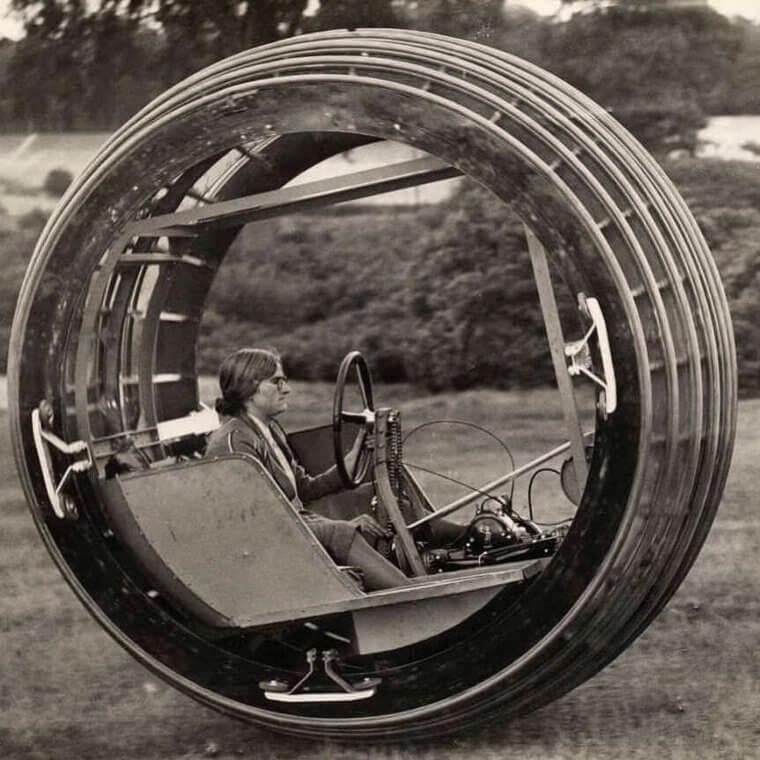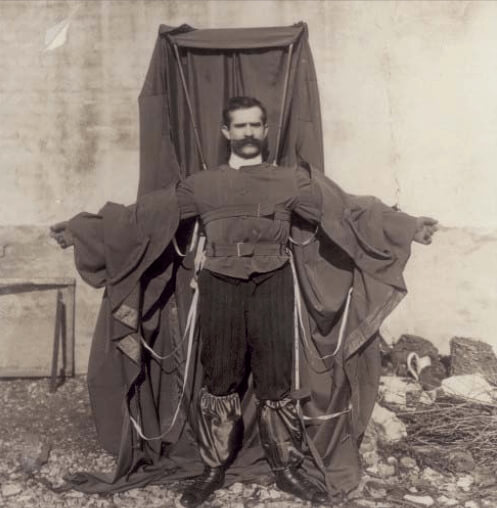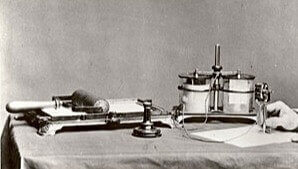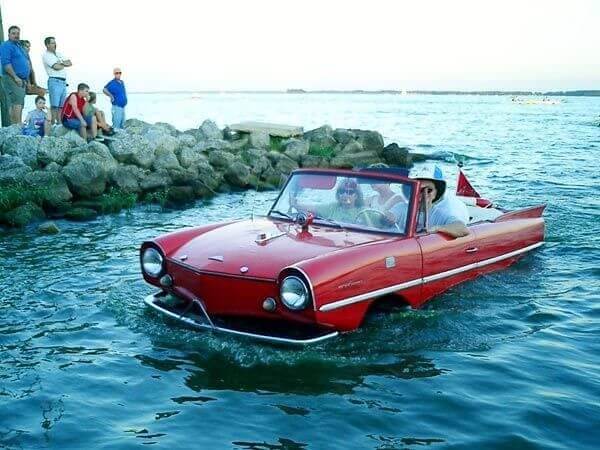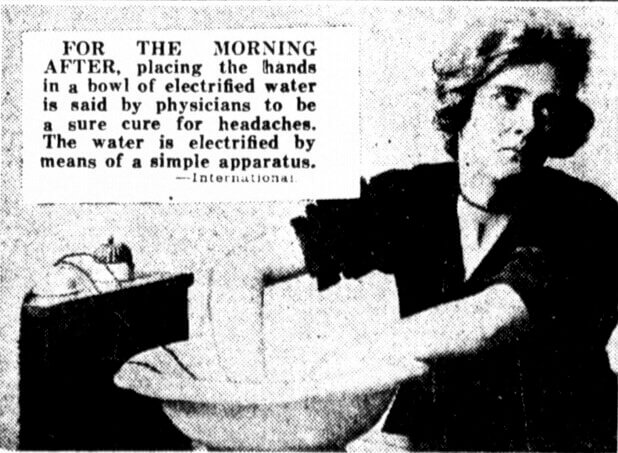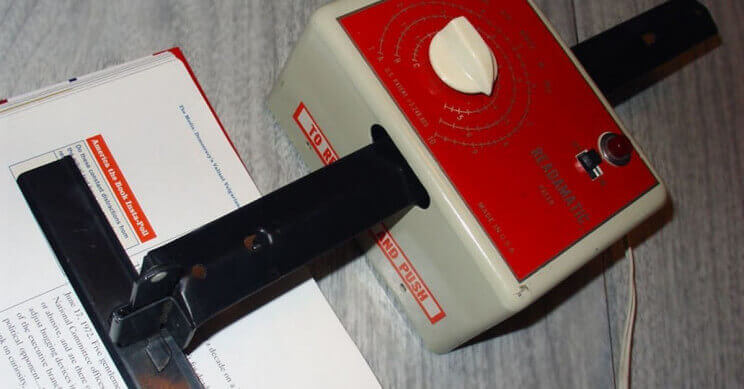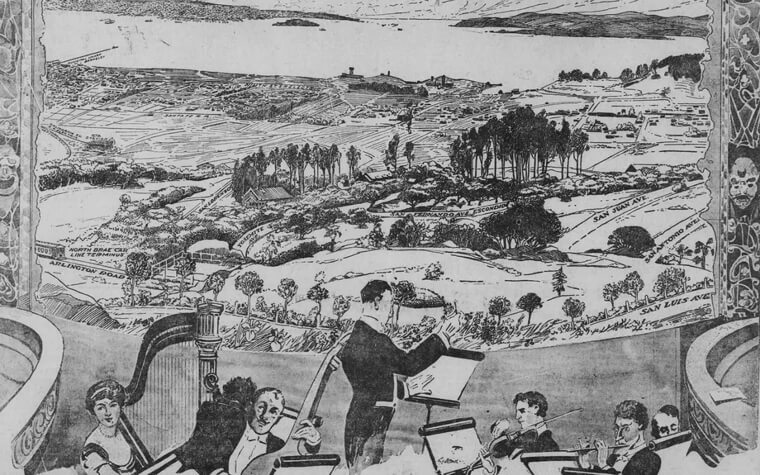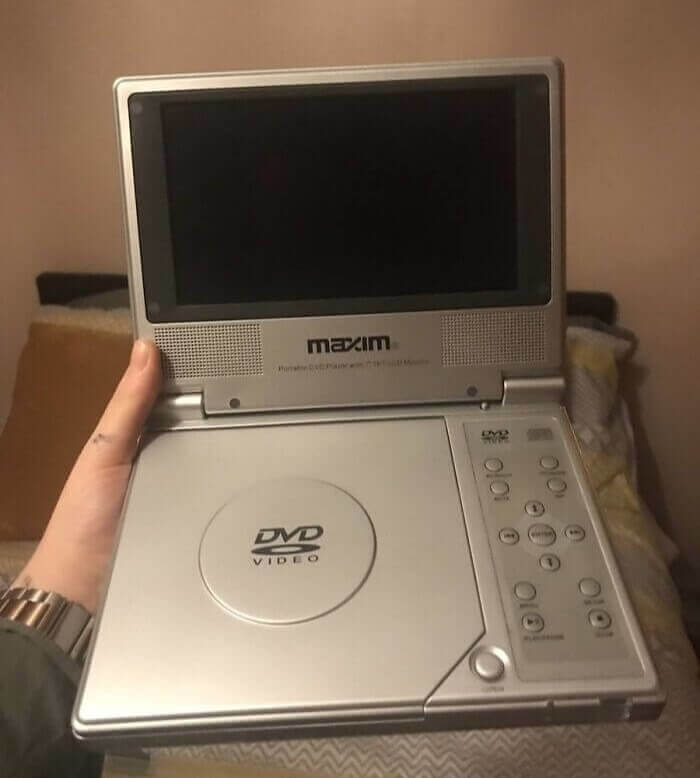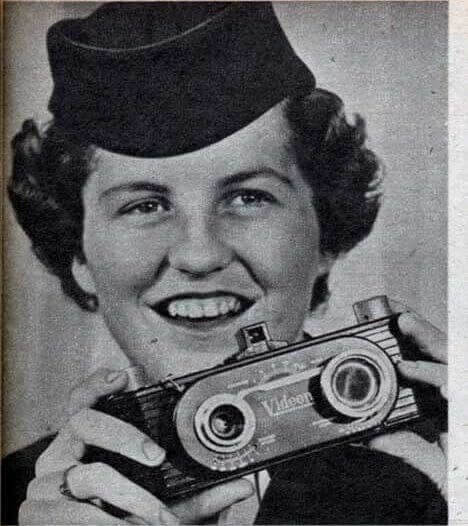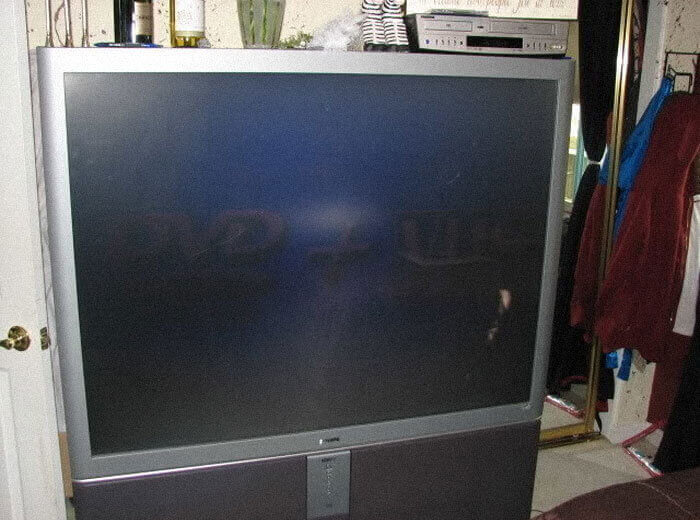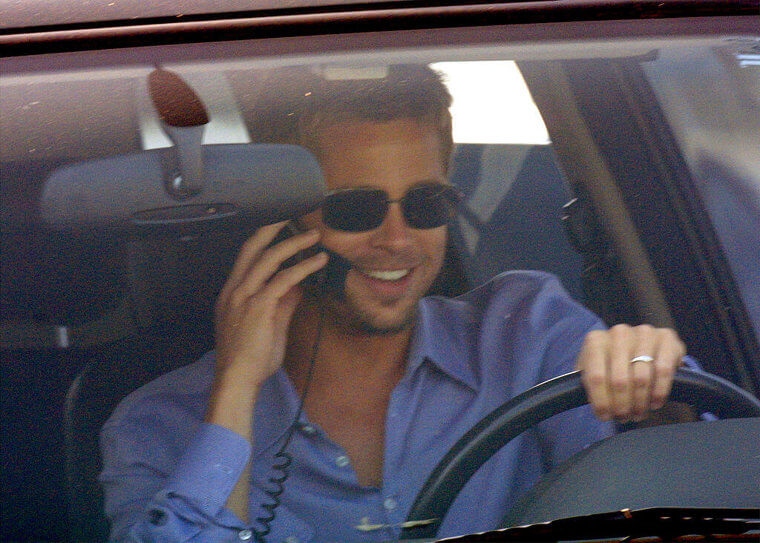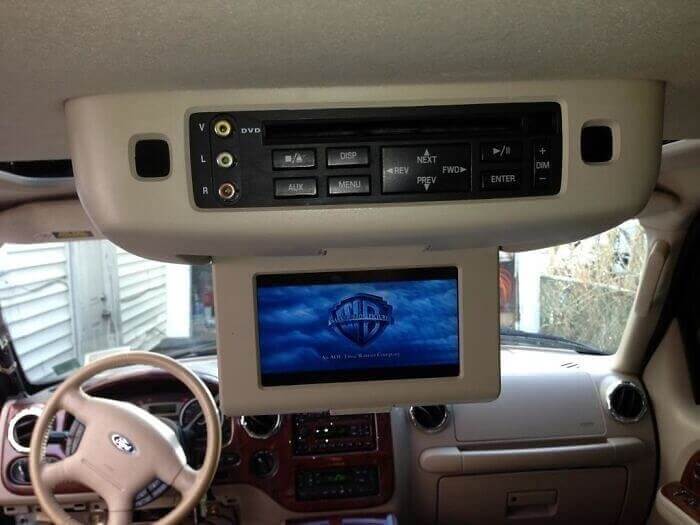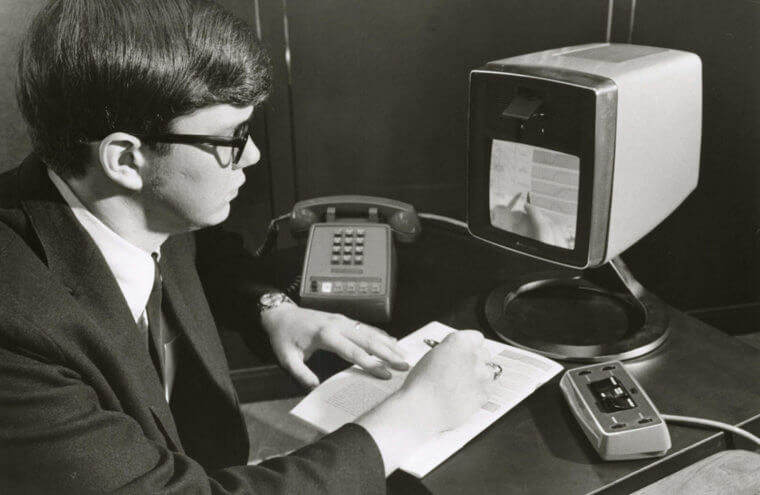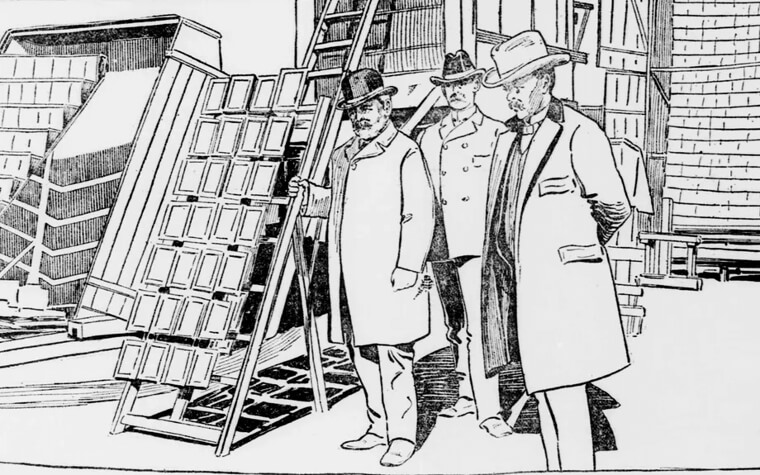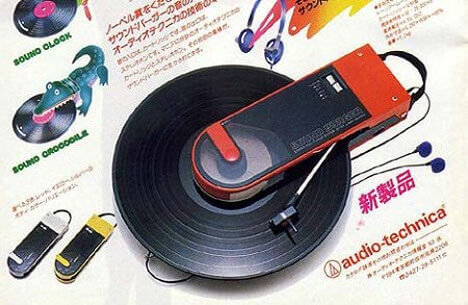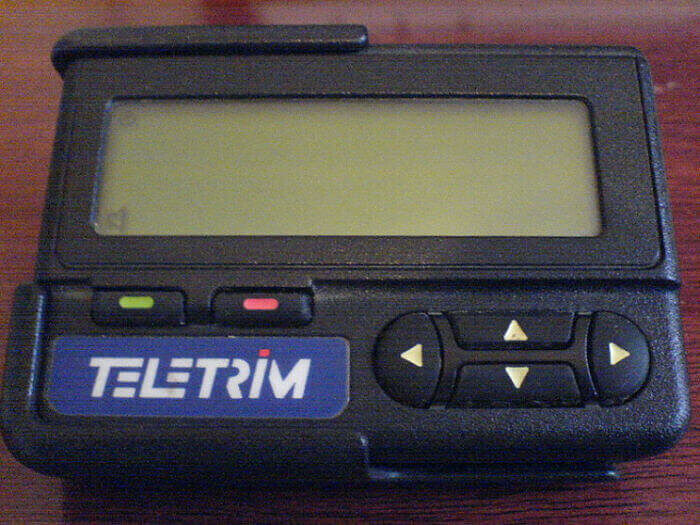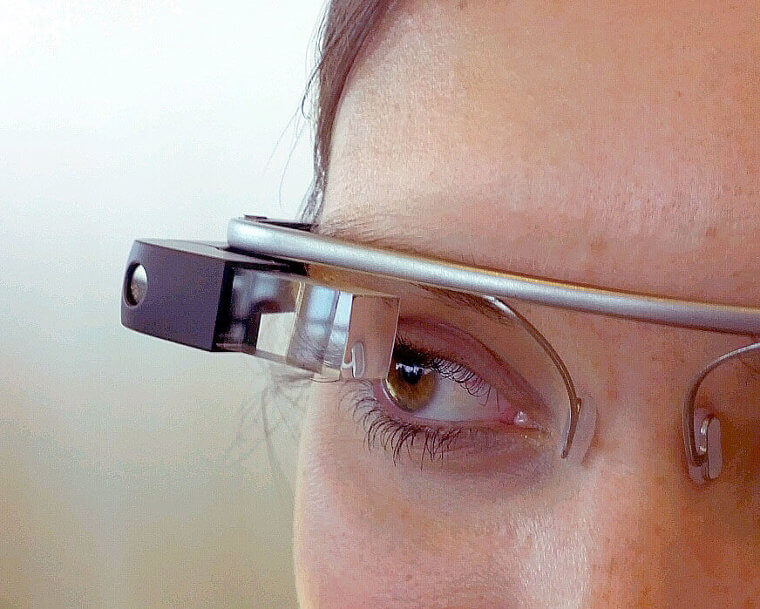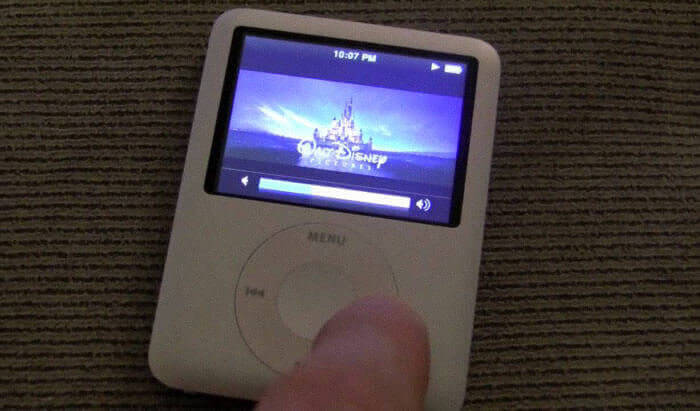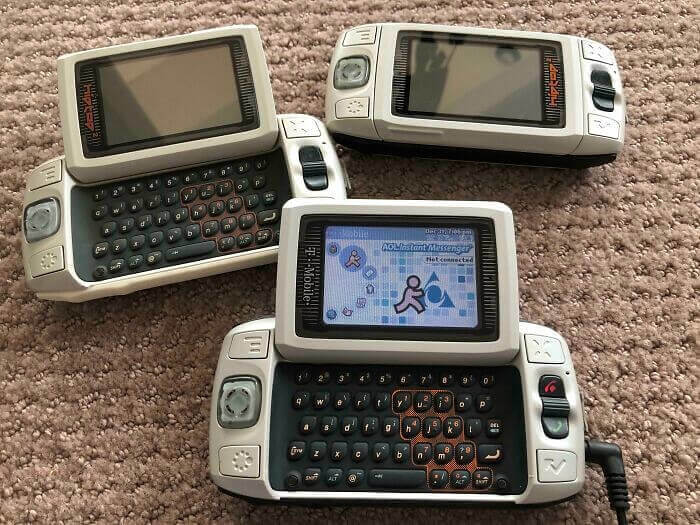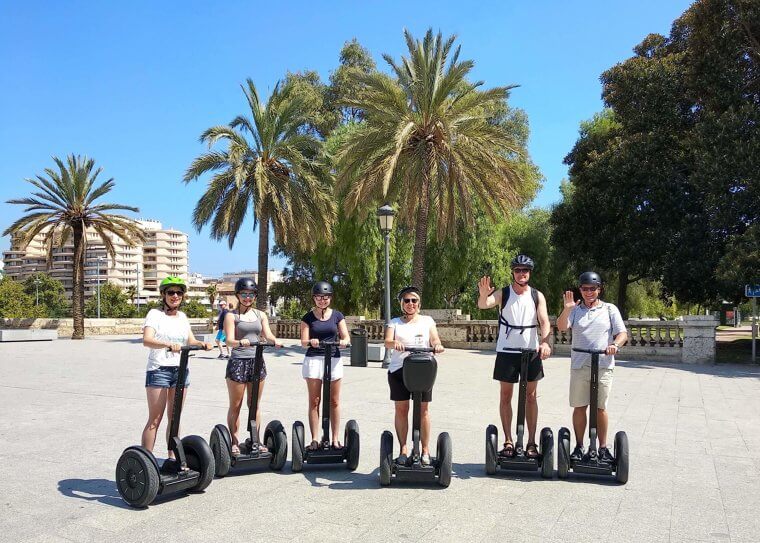This article was originally published on RetroWays
1. People Were Obsessed With Weight Since The Beginning Of Time
Weight has been an obsession for people for a long time, especially since society decided that a thin, slender body was the standard of beauty. Therefore, when the Slendo Massager came out in the 1940s, people went crazy, especially women.
The machine had a series of metal rollers that massaged women's hips and thighs, which were supposed to blast fat through electricity. However, the only effect people saw was red marks from the rollers and no weight loss results.
2. The Glamour Bonnet Looks Like A Torture Device
While this looks like a torture device, it was actually a beauty treatment for women in 1941. The Glamour Bonnet went over a woman's head, and the attached hose was supposed to create low atmospheric pressure like a vacuum to improve skin complexion.
We don't know how people managed to breathe in this device, but it looks like beauty regimens in the '40s were quite harsh compared to what we are used to today.
3. The Welte-Mignon Piano Was Supposed To Be The Biggest Invention In The Music World
The Welte-Mignon piano wasn't like other pianos that played pre-recorded music in the early 1900s. While most player pianos emphasized the music, this one was about the performance. Famous pianists could play songs, and then the piano would "record" their performance on rolls.
People could take the rolls home with them for their own Welte-Mignon and listen to the performance again. It was supposed to be the future of music, but the record player surpassed it because it offered a better option for listeners and artists.
4. A Submarine Tube So People Could Be One With The Fish
Invented by Charles Williamson in the 1910s, the submarine tube was once thought to be the future of underwater photography. The idea was simple: put a sphere underwater and connect it to the surface with a large waterproof tube.
Although it seemed like the perfect way to be one with the fish, the invention of the underwater camera made it easier for people to get close to marine life. With more options available, the submarine tube became a historical quirk.
5. The Bell Rocket Belt Was A Promising Invention For The Army
This strange contraption is called the Bell Rocket Belt, and it was a promising invention for the US Army in the '50s and '60s. It was a rocket pack that helped a person leap a short distance. JFK was even given a personal demonstration.
However, the belt only put a person in the air for 21 seconds at the time, which wasn't long enough to get anywhere. The army lost interest in the invention because it was too heavy and useless for them.
6. When Everyone Wanted Robots To Be Our Slaves
At a time when people had a strange fascination with robots programmed to do household chores, someone created a phone-answering robot that only had two functions. It could pick up the phone and hang it up. It didn't do anything else, but people were excited about it.
It couldn't record or play messages, which is why it quickly became useless because other machines could do much more. Eventually, answering machines came along, and it was what people had been wanting the whole time.
7. A Car That Looked Like A Hamster Wheel
You might be wondering why anyone would want to ride around in a giant tire, but it was thought to be the way of the future. During the 1930s, the monowheel was proposed for use as serious transportation, but it had many drawbacks.
The inventors thought it could result in a more efficient mode of transportation. However, there were issues with steering, impeded view, and lack of stability. While they are not used for everyday transportation, they are still created for novelty riding.
8. This Wearable Parachute So People Can Jump Safely Whenever Needed
Austrian-born tailor, inventor, and parachuting pioneer Franz Reichelt is sometimes referred to as the flying tailor because of his wearable parachute invention. It was something not much bulkier than an aviator's suit, but with a parachute inside.
With the dawn of the aviation age, people wanted to take extra safety measures because there were too many accidents. However, when Reichelt got permission to test his suit by jumping off the Eiffel Tower... he fell to his death when the parachute malfunctioned.
9. An Umbrella To Keep Cigarettes Dry
In the world of cigarette innovations, this has to be the most bizarre of them all. Can you imagine being so addicted to cigarettes that you invent a mini umbrella to keep them dry, never mind keeping the rest of your body dry?
People could have just smoked under their umbrellas, but that was clearly too hard. Smoking was such an important part of the culture in the '30s that smoking was even shown in children's cartoons. As people realized cigarettes were bad for you things like this faded out.
10. Thomas Edison's Electrical Pen... Because Regular Pens Were Boring?
Writing with a regular pen must have been rather difficult back in the day because Thomas Edison invented an electric pen. It could make copies of documents people were writing by creating stencils as they wrote. While it had some initial success, it couldn't compete with the typewriter.
Although the basic design was later reused for another invention, it wasn't a much less efficient way of creating documents. From Edison's electric pen came the first tattoo needle in 1891.
11. A Boat /Car, So You Can Drive Right Into The Ocean
If you wanted to drive in style on the road and the ocean, the Amphicar was the cruiser for you. However, the 1960s Amphicar was neither a decent car nor an accomplished motorboat, so it was a total flop when people realized how inefficient it was
Nearly 4,000 people decided to buy the car-boat, but they said it was like driving a bathtub because water would still get into it as waves splashed. Waterproof upholstery helped, and two of them even crossed the English Channel without sinking, but most didn't come close.
12. Hit Clips Only Played Part Of The Song
Have you ever wanted to carry around a micro boombox with a bunch of tiny keychains hanging off of it? Probably not, but people in the early 2000s thought this was the next best thing in music. To top everything off, the little music clips only played 60 seconds of a single song.
Imagine walking around only knowing 60 seconds of a song and having to change the clips every minute to hear a new song or restart the current song. These weren't very efficient, and they took up space if you wanted to have a variety of songs with you.
13. A Gas-Shooting Riot Car Might Have Been The Worst Idea
Times were very different in 1938. Instead of worrying about the basic human rights of rioters or protestors, governments were more concerned with how to control crowds and put a stop to riots at any cost. That's where the idea of a riot control car came into play.
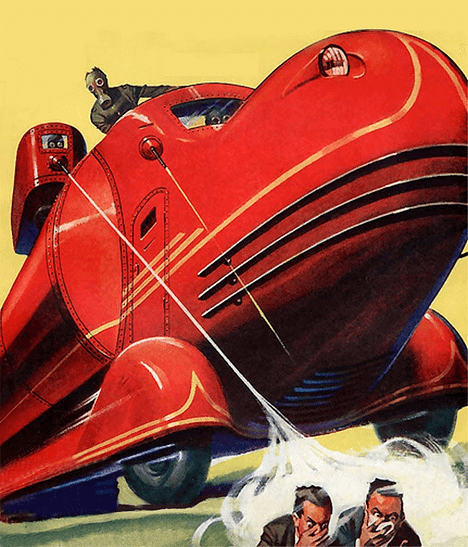
They were meant to control rioters with various methods, and this particular vehicle was supposed to shoot water, bullets, or poison gas, depending on the severity of the situation. This was all in a bid to stop public uprisings.
14. Electrified Water Was Supposed To Be A Hangover Cure
In the early 1900s, "electrified water" was considered the next big thing. Typically water and electricity are things that don't go well together. Still, the idea was that people would run an electrical charge through water, and after it stopped, the liquid would have all sorts of new qualities.
As early as 1904, people pitched "electrified water" as a way to sterilize clothing without soap. In 1920, someone suggested that dipping your hands in electrified water was the next big hangover cure. It surprisingly wasn't as dangerous as it sounds, but it didn't do much.
15. A Robot To Help You Read More Books
Fewer people read books now more than ever, but in the 1960s, companies tried to combat this problem. The Robot Readamatic was invented in 1963 to help people read faster by showing one line of text at a time. The arm looked at a customized pace to keep the reader focused on that line.
It was a lot of engineering for something anyone could do with a ruler, stopwatch, or hand. Regardless of the countless reasons it failed, today we have things like computer programs, AI, Siri, and Alexa to help people with reading.
16. The Motorola Razr That Everyone Had To Have
Before the Motorola Razr was released in 2004, cellphones had evolved into chunks of plastic. However, the Razr cut the classic flip phone in half, and it was only 10mm thick. Soon this became the "it" phone that every celebrity was using, and people were lining up for it like they do for the iPhone today.
However, as people moved away from flip phones and started buying touchscreen phones or Blackberrys, the Razr went out of style. They are still producing Razrs, but no one really owns flip phones anymore.
17. See Through Electronics That Were "The Way Of The Future"
During the late '80s, '90s, and early 2000s, there was an obsession with clear things. For some reason, people wanted to know what is inside all of their electronics, so everything from phones to Gamboys were made with translucent plastic, and you could see all the inner workings of things.
These things went perfectly with the blowup furniture we all had in our rooms as kids, but at some point, people realized this didn't look good. Maybe someone finally thought it was strange to see all the pieces that go inside our phones.
18. Daylight Motion Pictures... The Equivalent Of A Movie Theater With All The Lights On
Imagine going to the movie theater where the auditorium is completely lit. Some people in the 1910s thought it was the future of film. When movie theaters opened in the 1900s, people disliked the dark auditoriums. They thought having the lights on was more preferable and safer for people's eyes.
California went as far as passing a law that all theaters had to be sufficiently lit. However, bright movie theaters didn't stick around for long because it was hard to see the actual films with all the lights on. Eventually, people felt safe in dark theaters, and their eyes got used to it.
19. Someone Once Tried To Make Tanks Fly
Tanks are massive and heavy, and yet someone thought it would be a good idea to make them fly. It was probably because they go so slow on the ground. It's hard to tell who invented it first, the US or Soviets, but they didn't really make sense.
The tanks were too heavy, and the tow planes tended to get overheated because of the weight they had to carry. That being said, there were around 36,000 created, and, surprisingly, and the Soviets used them in actual combat during World War II.
20. Batteries That Told You How Much Percentage Was Left
We don't understand why this one was a flop because we wish we knew when our batteries were almost dead. Duracell is the largest battery producer in the world, and they once had batteries that had the percentage on the side.
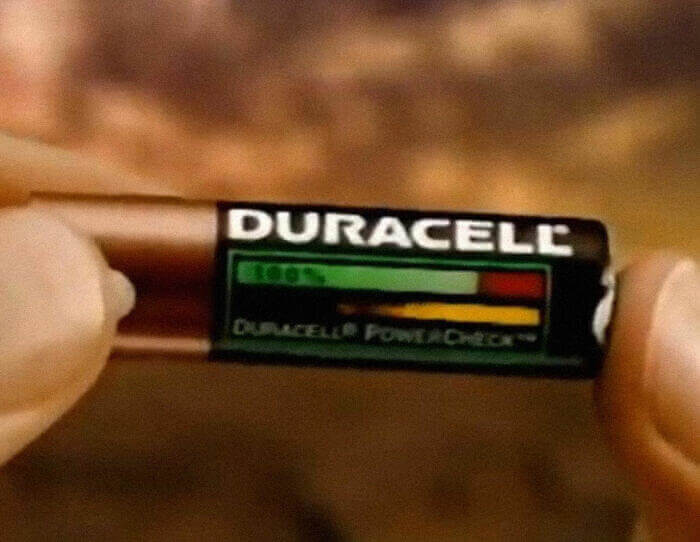
Although this was a good idea, the percentage was never completely accurate, and it was annoying to open the device up just to check the battery percentage. If only they perfected the technology to make this product what it could be.
21. Portable DVD Players Were The Only Way To Watch Movies On The Go
Portable DVD players were cool back in their day; however, now we have phones and iPads that don't require us to carry around a case of DVDs with it. Yes, it was practical at the time, but it isn't now, and we know that.
If you ever wanted to take this with you on a long car ride, you had to pack a whole CD case worth of DVDs, but today you can just download whatever you want to watch while you're in the car.
22. A UFO Camera That Could Identify Alien Spaceships
Long ago in the 1950s, reports of UFOs were so abundant that the US Air Force enlisted the public's help to find out what was going on, so they introduced Flying Saucer Cameras. It integrated a second lens to allow amateur photographers to determine the identity of airborne objects.
Although they could never confirm extraterrestrial life or ships, the Air Force underestimated the capacity of the public. There were no definitive answers and underwhelming explanations. As technology has evolved, phones and cameras have managed to capture some strange sightings that not even the Pentagon seems to be able to explain...
23. Backwards Seats In Station Wagons Because Safety Took A Backseat
While rear-facing seats in a station wagon seemed like a good idea, it probably made a lot of people car sick while driving backward. The third row was like a separate area for the kids, but it probably wasn't exactly safe.
We are glad they left these in the past because cars have more trunk space now. These seats were impractical and took up too much room in the car where things could have been stored.
24. Thick Big Screen TVs Only Rich Kids Had
Remember when you were younger, and you always had at least one friend that had the big-screen TV that was as thick as two people? Those things took up so much room because they were so large and not in a good way.
These things also weighed a ton and didn't look good in any home compared to the sleek designs. Today there are televisions that are an inch or two thick compared to almost a yard.
25. Car Phones Were Supposed To Be The Safe Way To Talk And Drive
"Let me call you back from the car phone." Back in the day, that statement meant you had money and power because having a car phone was not cheap. Apparently talking on the car phone was much easier than using a cellphone, but it was probably just as dangerous.
When cars started integrating hands-free systems in 2008, car phones have become obsolete, but we will never forget the era of having to know someone's car phone number if you wanted to reach them between the office and home.
26. When Your Parents Thought This Was Less Annoying Than A Real Dog
This robot dog was the solution to not having to get a real pet. Poo-Chi was a great companion. It came with a bone and even did tricks. What a great pet that was.
Eventually, we realized how pointless this toy was and we don't know why anyone would play with this more than once. Some toys from the '90s seemed like the next best thing, but this one really flopped.
27. Car DVD Players So Everyone On The Road Can Watch Whatever You Are Watching
Going on road trips with the family was quite an adventure. You had to fight for the good seats, make sure you had enough snacks, and tons of entertainment needed to keep all the children occupied so that they couldn't distract the parents from driving. That's where the car DVD player came into play.
The DVD player was a great idea to distract the passengers; however, it also distracted the drivers and everyone else on the road. Also, the only way to change the movie was in the CD player in front of the car, so the driver would have to deal with that.
28. The Original Video Phone
If you remember the film 2001: Space Odyssey, then you might also remember the characters communicating with video phones. Before facetime and Skype, AT&T unveiled the "picturephone" in 1964.
The clunky-looking machine was something that seemed like it would be the way of the future back in the '60s. However, we know that we can facetime anyone at the push of a button at any time. We don't need to be sitting near a landline to see people around the world.
29. The Fiske Reading Machine Tried To Make Printing Pointless
Rear Admiral Bradley Fiske was a celebrity inventor, which is why people thought his reading machine would be the biggest thing in literature. Introduced to the market in 1922, the idea was that books would be printed onto small pages in tiny letters, and readers would use a magnifying glass to read.
It sounded inconvenient, but researchers listed advantages such as cheap manufacturing, better quality paper, more free space in the house, and more affordability. However, the reading machine never took off as mass-market paperbacks grew in the 1930s.
30. The Helio-Motor Was Supposed To Replace Electricity
Based on the legend of a heat ray, Dr. William Calver created the Helio-Motor. It was based on flat mirrors that moved according to the sun's position and aimed at bricks or water. The goal was to heat the world and generate enough power to replace energy. This sounds like something we have today, right?
It didn't become the next big thing in electricity because it was too hard to convert and store all that energy. Even if it worked well, it wasn't better than the existing sources like coal. Although it was useless back then, it inspired the solar power that we use today.
31. Portable Record Players Were Doomed From The Start
The portable record player seemed like a good idea in theory because people could take their records with them wherever they wanted, but the Walkman was about to be introduced, so this was a slight hassle compared to that.
While people still love record players today, buying large records is not only expensive, but they take up a lot of space over time. They can be used as home decor, but it was less practical at the time.
32. Watches That Lit Up Blue So You Wouldn't Hurt Your Eyes In The Middle Of The Night
Nothing screams class like a watch that lights up so you can look at it in the middle of the night. These watches were once trendy because you could check the time when you wake up randomly without burning your eyes. The blue light was less harsh than other light-up watches.
We don't know how often people need to check the time in the middle of the night, but we guess people realized this was an unnecessary feature for nice watches.
33. Pagers Are Collecting Dust Somewhere
Back in the day, before cellphones existed, pagers were the way to connect people. Everyone had a pager number, and when you got a message, you would have to call the other person from a landline. We wouldn't even know how to use a pager today.
There are a bunch of lonely pagers collecting dust in people's basements right now because the cell phone came along, and they no longer served a purpose. We wonder if anyone still uses a pager today though.
34. Google Glass Was An Ugly Vision Into The Future
When Google announced Google Glass, people were intrigued that there would be glasses that could act as computers, sorta like something out of a spy movie. However, when people saw them, they realized Google hadn't thought about the user's wants and needs.
Google didn't define what problem it was solving for customers, and they assumed the product would sell itself. But the glasses weren't stylish, they looked strange, and they were beyond expensive for something so unnecessary.
35. These MP3 Players That Ruined Music
Before everyone had iPods or phones with music, people had these tiny MP3 players that you had to download each song file onto. The file names were so confusing, and when you finally got the songs on the MP3 player, the songs sounded strange because it couldn't store the whole file.
You would have part of the instrumental or vocals cut off because the thing couldn't handle an entire song file. We are glad that these went out of style quickly because it was not a good way to enjoy music.
36. Movies On An iPod With A 2-Inch Screen
Remember when iPods first got the capability for music to play on them? The screens were so small, but we enjoyed being able to watch movies on the go. Now that we look back on it, it was rather pointless to have movies on a screen we could barely see.
Eventually, better devices came out with larger screens so you could see all the details of the movie instead of having to squint at the screen. It wasn't a total flop because the iPod was useful, but the movie feature was lame.
37. If You Didn't Have A Sidekick You Weren't Cool
Who else remembers watching Gossip Girl and being envious of the characters with their Sidekicks? The screen flipped up in a sassy way, and some of them even had AOL messenger so that you never had to be away from seeing if your crush was online.
These phones were all the rage for a while until the iPhone came along and kicked them out of the spotlight. The magical flip-up screens were no longer shiny and new, because a new toy was on the market.
38. People Thought Segways Were The Transportation Of The Future
Segways came onto the scene in the early 2000s, and people were excited to try them out. They were the new way to tour the city, and people would use them to show they have money and power. However, they quickly failed.
Segways didn't address one specific need, and they were rather dangerous. People were getting around on foot, bicycle, motorcycles, and cars just fine without the help of Segways, and they didn't take off like the inventors had expected.
39. The Hindenburg Put A Damper On Airship Travel
Traveling in an airship like this one was supposed to be the new way to fly in style. The upper class thought they would be flying in even more luxurious ways than in planes. But after the Hindenburg disaster, airship travel went down the drain.
On May 6, 1937, the Hindenburg caught fire and crashed when it was trying to land. Why would anyone want to travel like that after seeing what could happen to them? Airship travel never took off after that, and we are not surprised.
40. Who Thought 3D TVs Were A Good Idea?
When companies started releasing 3D TVs, it was amazing because you could now enjoy 3D movies in the comfort of your own home without having to pay IMAX prices. However, the TVs didn't sell very well, and they were so expensive.
The makers were hoping that users would pay extra for the 3D feature, but many people weren't interested. Also, 3D movies were converted into 3D after they were filmed, so the quality was low, and people quickly lost interest.
